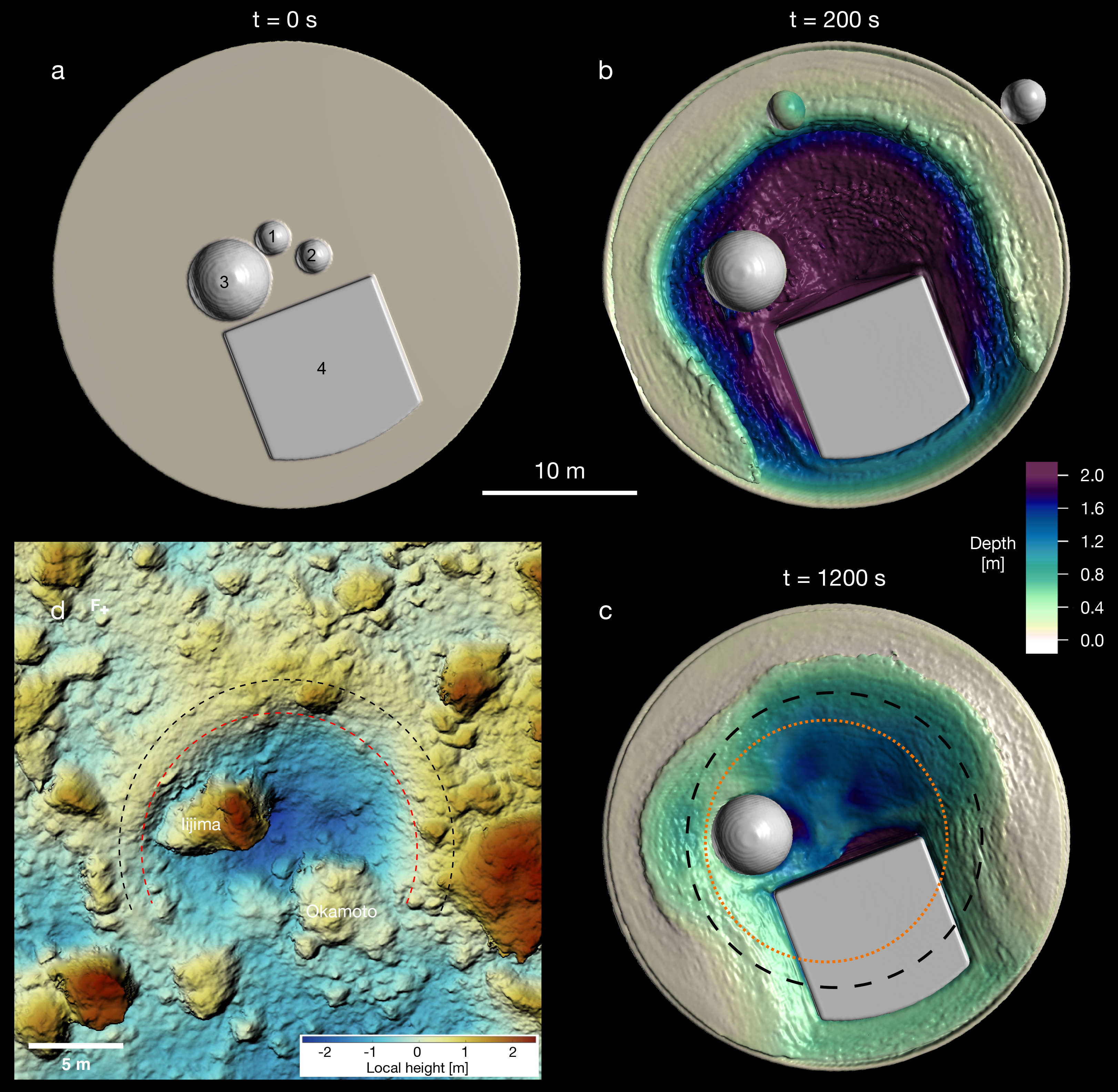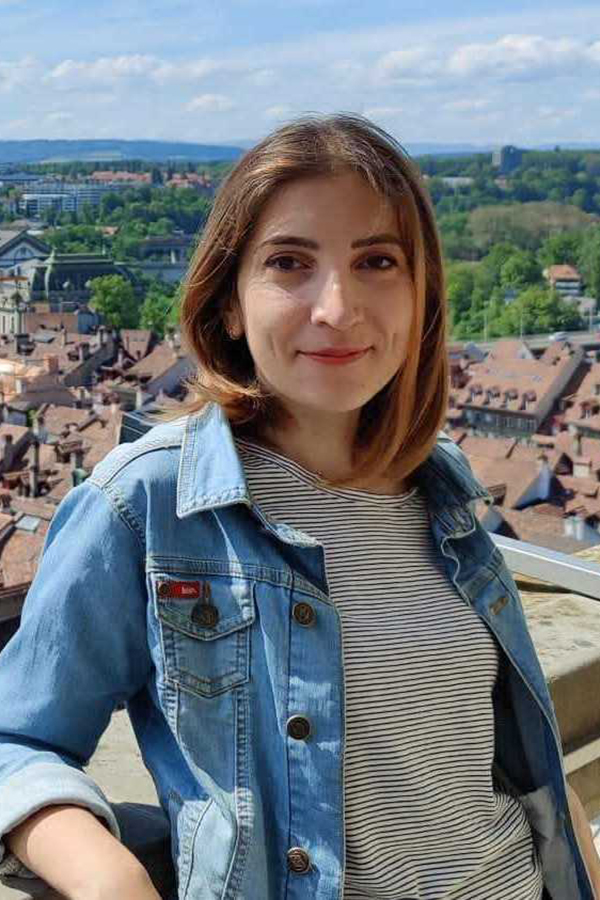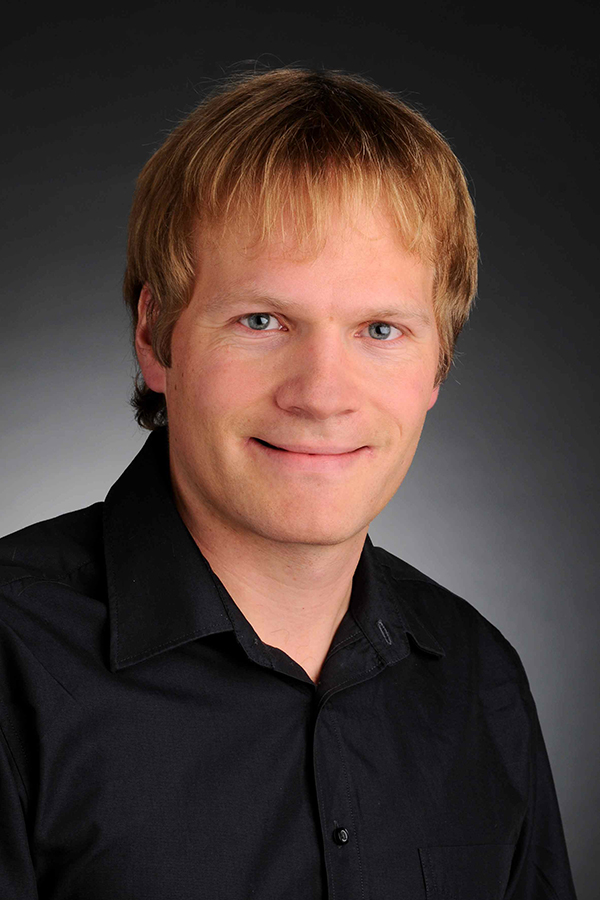Small asteroids are probably young
The impact experiment conducted on the asteroid Ryugu by the Japanese Hayabusa2 mission which took place two years ago resulted in an unexpectedly large crater. With the use of simulations, a team led by the University of Bern and the National Center of Competence in Research (NCCR) PlanetS has recently succeeded in gaining new insights from the experiment regarding the formation and development of asteroids. These insights are also important for the DART mission of NASA.
The Hayabusa2 spacecraft was developed in order to study the history of the asteroid Ryugu, and collected samples and returned them to earth for laboratory analysis. The project participants are Dr. Martin Jutzi and Dr. Sabina Raducan, both from the Physical Institute of the University of Bern, Department for Space Research and Planetology (WP), and are members of the National Center of Competence in Research (NCCR) PlanetS. Under their leadership, in a study which has recently been published in Nature Communications, the team has presented new findings on the formation and development of asteroids.
Rules on the development of craters help with dating asteroids
To explore the characteristics of asteroids, during the space mission Hayabusa2, a Small Carry-on Impactor was fired at the surface of the asteroid Ryugu. “The crater made by the impact was far larger than expected. We therefore tried to reproduce the results of the impact on Ryugu with the use of simulations, to ascertain the kind of characteristics the material is required to have on the surface of the asteroid,” explains Martin Jutzi.
The nature and the size of an impact crater on an asteroid are influenced by various factors. Firstly, by the specific characteristics of the projectile, and secondly, by the characteristics of the asteroid—its strength or gravity, for example. “The size and nature of the crater resulting from the impact can lead to a direct diagnosis of the material characteristics and the near-surface structure of the asteroid,” explains Jutzi. The study of the crater formation process therefore has important implications for the understanding of the geological and geophysical development of asteroids.
“So far, the way in which the formation of craters works at low gravity has largely remained unexplored. This is because the conditions of the impact cannot be simulated in laboratory experiments on Earth,” explains Sabina Raducan, who is managing the project together with Martin Jutzi. The researchers show that the asteroid probably has a very loose internal structure and is only held together by very small cohesive forces and gravitational interactions. “On the basis of these conditions, we are able to use our numerical simulations to reproduce the outcome of the impact on Ryugu,” explains Raducan.
The relationships between the characteristics of the projectiles and the size of the crater derived from the results indicate that the surfaces of small asteroids must be very young. “Our results also show that low cohesion can have a significant impact on crater formation. On Ryugu, there are various geological surface units that have different ages. This may be attributable to the influence of cohesion,” adds Jutzi.
Important findings for DART
The work of Jutzi and Raducan is also important for the “Double Asteroid Redirection Test” (DART) mission by NASA, in which the scientists are also taking part. DART is the first full test in the world regarding planetary defense against the possible impact of asteroids on Earth. On 27 September 2022, as part of the DART mission a space probe crashed into the asteroid Dimorphos to deflect the asteroid from its orbit. “The findings of the simulations for the impact on Ryugu also help with analyzing the results of the DART mission”, explains Jutzi. “We are working on applying the newly developed models to DART in order to gain insights into the characteristics of Dimorphos. Our initial simulations look very promising,” adds Raducan.
Publication:Martin Jutzi, Sabina D. Raducan, Yun Zhang, Patrick Michel, and Masahiko Arakawa: Constraining surface properties of asteroid (162173) Ryugu from numerical simulations of Hayabusa2 mission impact experiment, Nature Communications, November 2022 |
Bernese space exploration: With the world’s elite since the first moon landingWhen the second man, "Buzz" Aldrin, stepped out of the lunar module on July 21, 1969, the first task he did was to set up the Bernese Solar Wind Composition experiment (SWC) also known as the “solar wind sail” by planting it in the ground of the moon, even before the American flag. This experiment, which was planned, built and the results analyzed by Prof. Dr. Johannes Geiss and his team from the Physics Institute of the University of Bern, was the first great highlight in the history of Bernese space exploration. Ever since Bernese space exploration has been among the world’s elite, and the University of Bern has been participating in space missions of the major space organizations, such as ESA, NASA, and JAXA. With CHEOPS the University of Bern shares responsibility with ESA for a whole mission. In addition, Bernese researchers are among the world leaders when it comes to models and simulations of the formation and development of planets. The successful work of the Department of Space Research and Planetary Sciences (WP) from the Physics Institute of the University of Bern was consolidated by the foundation of a university competence center, the Center for Space and Habitability (CSH). The Swiss National Fund also awarded the University of Bern the National Center of Competence in Research (NCCR) PlanetS, which it manages together with the University of Geneva. |
2022/11/30



